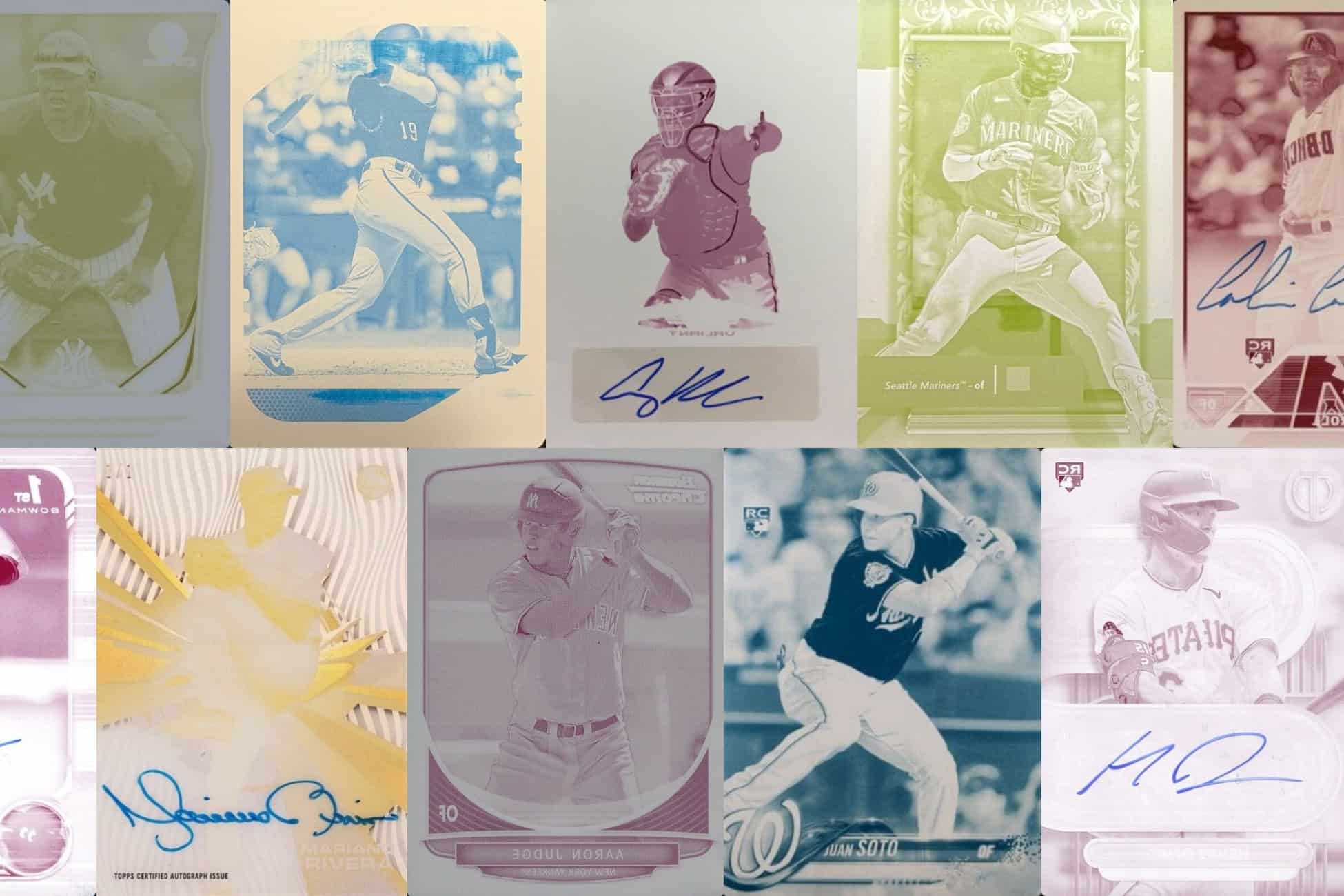In the vast and varied world of baseball card collecting, few items bridge the gap between hobby and production like baseball card printing plates. These metal sheets are not merely collectibles – they are tools of the trade, direct artifacts of the printing process itself. Unlike parallels or autographs, printer plates were never originally intended for collectors. Their journey from the factory floor to prized one-of-one hits is as fascinating as the cards they helped produce.
Understanding what baseball card printing plates are and how they function in the card-making process adds a layer of appreciation to modern collecting. This article explores the nature of these rare pieces, how they’re used during manufacturing, how they enter the collector market, and how fans perceive their value. Along the way, we’ll cover distribution odds, serial numbering practices, and the cultural niche these industrial remnants occupy in today’s hobby.
What Are Printing Plates?
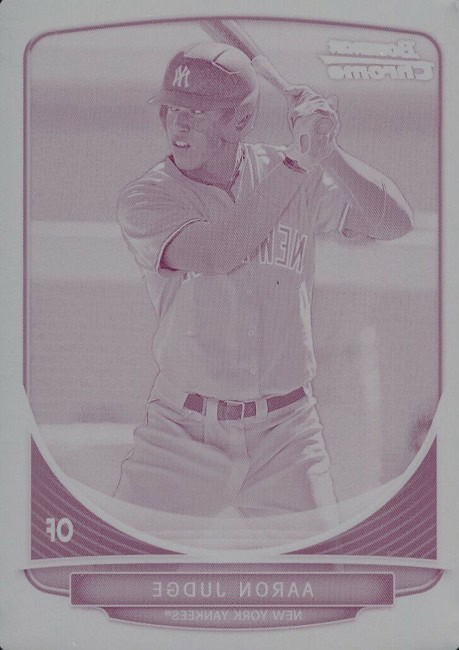
Printer plates are thin metal sheets – usually aluminum or stainless steel – used to transfer ink onto baseball card stock during the printing process. They are an essential part of modern card manufacturing, created specifically for each design that will be printed. Every full-color image on a card results from the overlay of four individual color components: cyan, magenta, yellow, and black. A separate plate is created for each of these, meaning that a single card may require up to four distinct plates for the front, and another four for the back.
These plates are the very items used to print the cards that collectors rip from packs. Because of this, each is completely unique. Once a product’s print run is finished, those plates are no longer useful for production. Rather than discard them, manufacturers in the 2000s began inserting them into products as one-of-a-kind collectibles. This shift turned a utilitarian tool into a highly sought-after piece of hobby history.
How They Function in the Printing Process
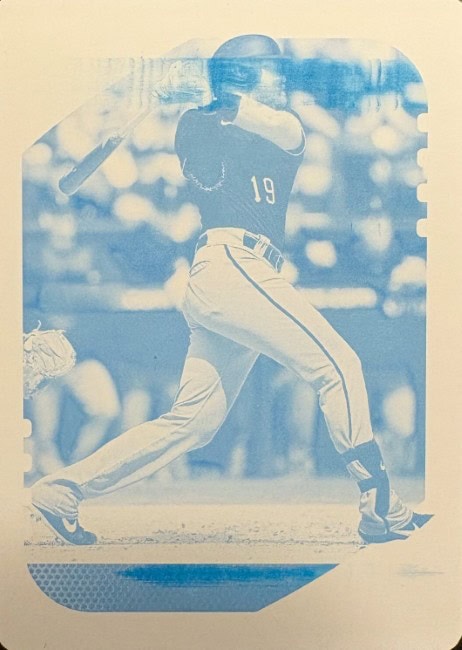
Modern baseball cards are typically printed using offset lithography. The process begins when a digital image is separated into its four CMYK color components. Each of these colors is then etched onto a separate printer plate. The plates are mounted onto rollers in large-scale presses. As card stock sheets move through the machinery, ink is applied via the plates, each one laying down its respective color in perfect alignment.
Because this is a subtractive color process, the combination of all four inks produces the full spectrum of color that we see on finished cards. The black plate, also known as the key plate, adds detail and contrast. Cyan and magenta contribute cooler and warmer tones, while yellow provides vibrancy and depth. Together, they build the final composite image in layers.
After printing, these metal plates retain visible wear and ink marks from their time on press. Some show streaks of residual color or press scratches. These imperfections are part of their appeal to collectors. They aren’t just replicas – they’re the actual working pieces that helped produce cards that now sit in binders, boxes, or slabs.
Distribution and Rarity
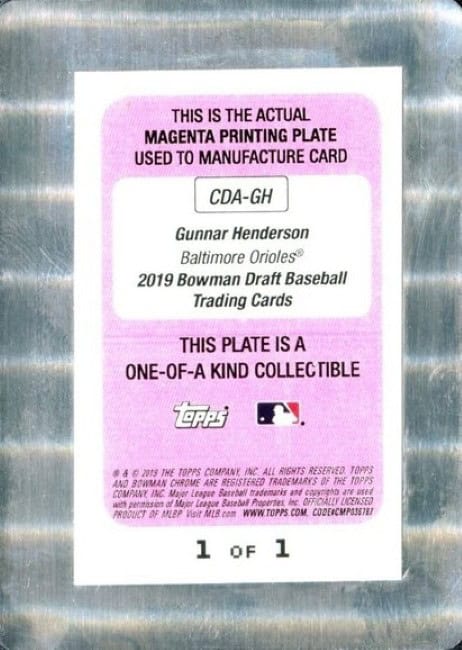
Baseball card printing plates are among the rarest inserts in any card product. While most cards have hundreds or thousands of copies, each plate is unique. However, because there are usually four plates per side of each card – sometimes up to eight total per card – their “1/1” designation can cause confusion. Still, no two plates are alike. Even identical designs will differ by color, wear, or ink residue.
In terms of distribution, the odds of pulling a plate vary by product. In flagship sets like Topps Series 1 or Bowman, plates are exceptionally rare. They might appear in only one in several thousand packs. In contrast, high-end releases such as Topps Sterling or Panini National Treasures often include at least one plate per box. Mid-tier products may fall somewhere in between, with case odds more typical than per-box guarantees.
Some plates are inserted directly into packs, often encased in protective holders. Others are distributed through redemptions, where collectors receive a code to claim their plate from the manufacturer. While redemption-based plates have declined in recent years due to concerns about fulfillment times, they’re still used in certain premium releases.
Serial Numbering and Authenticity
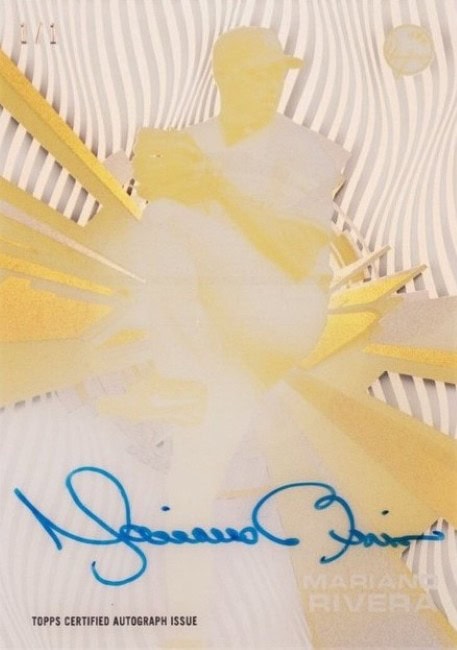
Nearly all modern printing plates are labeled as “1/1,” denoting their one-of-a-kind status. This marking is often printed or foil-stamped on the reverse of the plate. Some plates also feature the name of the player, the card number, the set, and the color of the plate. Even though there may be four (or more) different 1/1 plates per card, each one is unique in both physical characteristics and role in production.
Older plates, particularly those used before the early 2000s, may lack formal serial numbering. Some were destroyed or retained by the manufacturer, while others quietly entered the secondary market through employee giveaways or factory liquidation. Today’s releases are much more deliberate, and the inclusion of a serial stamp adds clarity for collectors.
Collector Perception and Debate
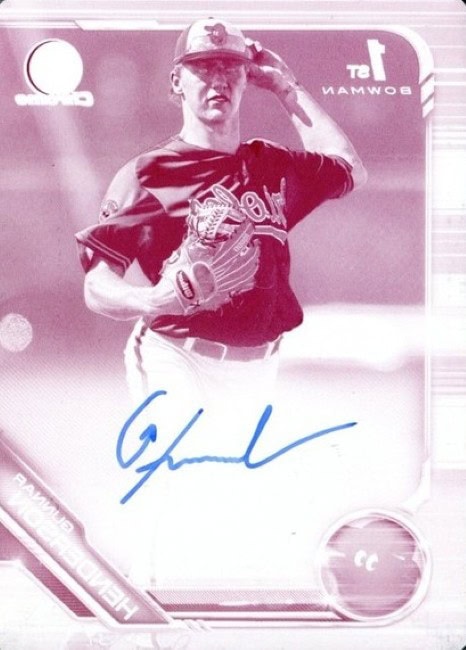
The reception of baseball card printing plates in the collecting community is complex. Some collectors prize them as true one-of-one items. They represent a tangible link to the production process and offer something few other cards can – evidence of real, functional use. Others see them as less visually appealing or confusing in their proliferation.
Those who appreciate printer plates often do so for personal or thematic reasons. A player collector, for example, might seek all four CMYK plates for a specific card. Some collectors enjoy the industrial or utilitarian look, complete with streaks of ink or faint impressions of text. In some cases, plates even display reversed images, giving them a ghostlike quality that adds to their mystique.
Yet printer plates are not universally embraced. Detractors argue that the multiple 1/1s per card can dilute their perceived exclusivity. Others are simply turned off by their aesthetics – metallic, often faded, and visually inconsistent. Unlike a refractor or colored parallel, plates rarely showcase the polished, glossy finish many collectors expect from high-end inserts.
Despite these criticisms, printer plates have a loyal following. They occupy a unique space in the hobby, standing apart from both mass-produced cards and manufactured relics. Their real-world function sets them apart as something closer to memorabilia than card stock.
Aesthetic and Practical Variation
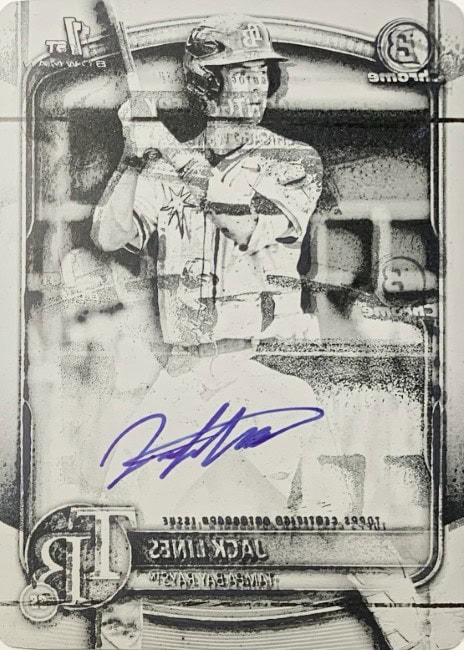
Not all printer plates are created equal. Differences in printing pressure, ink levels, and exposure to wear can result in wildly varied appearances. Some plates retain sharp, clean lines and color remnants. Others may look faded, damaged, or partially erased by cleaning or reuse. Some look downright creepy. These variations, while unintentional, add to their charm and uniqueness.
Additionally, certain plate colors provide more recognizable imagery. Black plates, for instance, tend to retain the most detail, while yellow and magenta plates often appear faint or abstract. Cyan typically lands in the middle, giving enough visual structure to identify the subject without overwhelming saturation.
Because of these differences, collectors often develop preferences. Some favor black or cyan plates for their clarity. Others pursue a full set of all four colors to complete a “rainbow” of a single card.
Printing Plates in Modern Sets
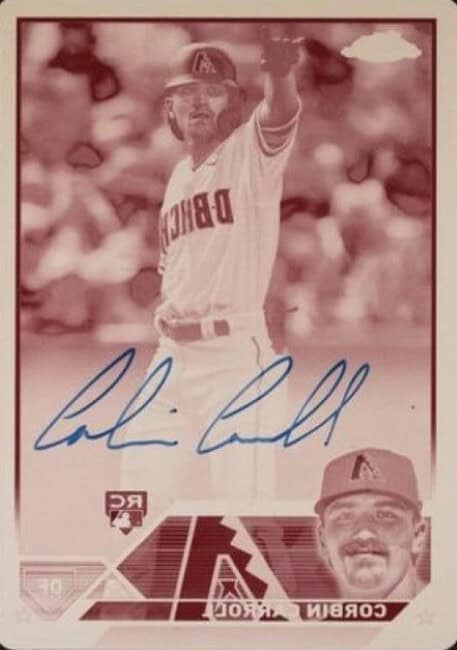
Printer plates have become a fixture in many modern card products. Topps includes them in flagship, Chrome, Bowman, and specialty lines. Panini uses them in National Treasures, Flawless, and Immaculate, among others. Even online-exclusive products like Topps Now and Topps Project 70 often release the four plates for each design.
Certain products are known for emphasizing printing plates as key chase elements. Topps Sterling and Archives Signature Series frequently feature them. In many cases, the plates are autographed or embedded in thick, high-quality holders, elevating their presentation.
Autographed plates add another layer of collectibility. These often use sticker autographs applied after the fact. In rarer cases, plates are signed directly, though that practice is less common due to the difficulty of writing on metal. Regardless, autographed plates are particularly valuable to collectors who appreciate both the production and performance sides of the hobby.
Market Trends and Valuation
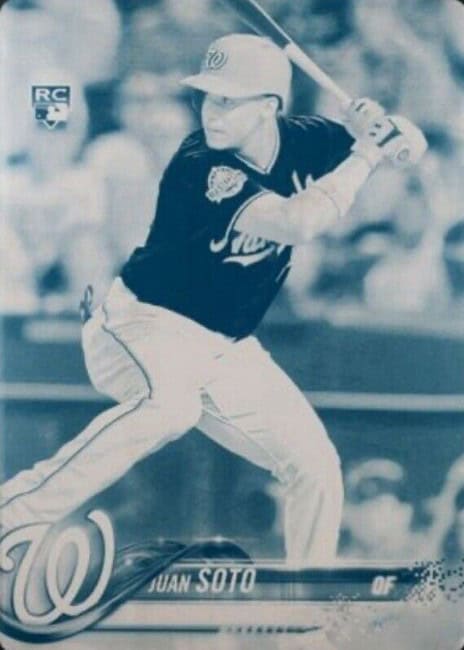
Pricing for printer plates varies considerably, largely because each is a one-of-a-kind item. Star players and rookies command high prices, especially if the plate is from a popular set or early rookie release. Mid-tier players or common cards may sell for under $100, but stars can fetch hundreds or even thousands depending on demand.
One challenge with valuing plates is the lack of direct comparables. Unlike serial-numbered parallels, which are produced in batches of known quantities, plates are unique. Condition, color, ink residue, and set popularity all affect the final price. As a result, auction dynamics and collector interest often play a larger role than traditional price guides. As a unique collectible, its value is what someone will pay for it.
Some collectors specifically chase plates as part of a larger “rainbow” effort. Completing a full parallel run of a specific card – including all colored refractors and the four printer plates – is a major accomplishment. Because plates are so scarce, they often become the bottleneck in these pursuits. When a missing plate finally surfaces, it can command a premium far beyond its intrinsic value.
Why Printing Plates Matter
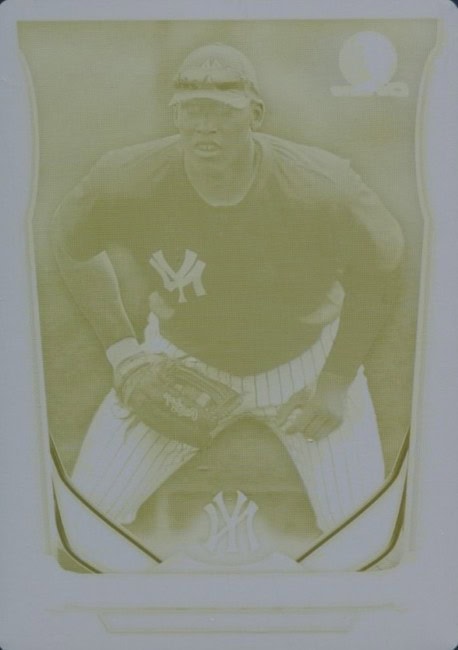
Printing plates represent something rare in the world of modern collectibles: authenticity grounded in function. Unlike manufactured relics or event-worn memorabilia, plates were used in the direct creation of the cards themselves. They bear physical evidence of that labor – ink stains, scratches, and signs of wear that tie them back to the machines that printed the cards.
This connection to process gives them an aura that can’t be replicated by other inserts. They’re not just designed to appear rare – they are rare, in a fundamental and tangible way. For collectors who value originality, history, and the physical craft of card making, printer plates stand as some of the most meaningful pieces in the hobby.
While not everyone finds them visually appealing, and while confusion over their “1/1” status persists, there’s no denying their place in modern collecting culture. They are the tools behind the cards, the machinery made collectible, and the metallic memory of the moment ink met paper.
Conclusion
Baseball card printing plates occupy a unique niche in baseball card collecting. Part relic, part tool, and part trophy, they offer a direct link to the production process that few other items can provide. Though opinions differ on their appearance and value, their authenticity is unquestioned. For some collectors, they represent the ultimate one-of-one – not just a card, but the cardmaker’s brushstroke.
As long as cards are printed using CMYK processes, printer plates will continue to exist. Whether collectors chase them for completion, investment, or curiosity, these artifacts will hold a place not just on checklists, but in the industrial heart of the hobby.
